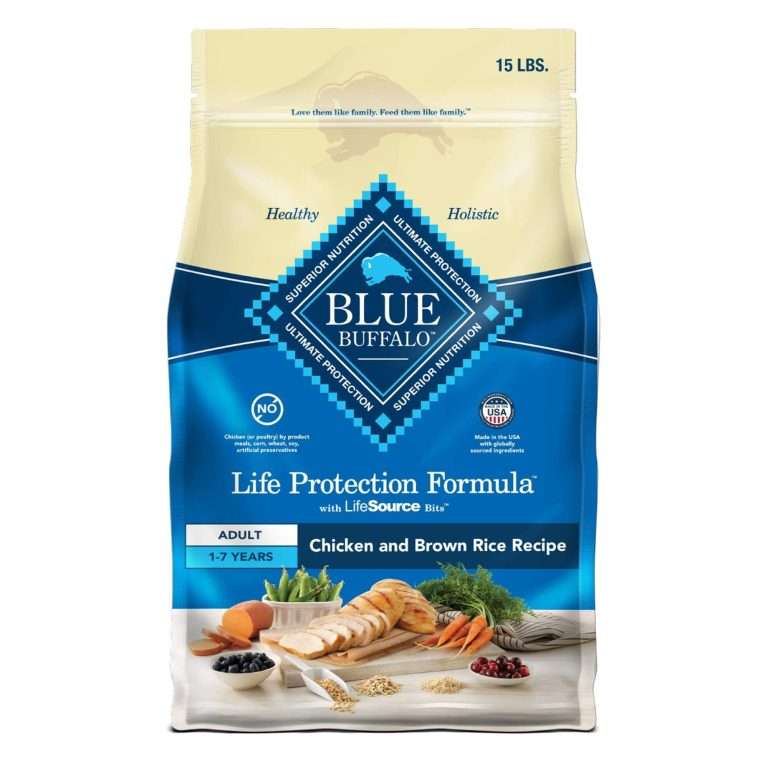Understanding Dog Food Labels

Understanding Dog Food Labels. Understanding dog food nutritional labels can feel overwhelming, but it’s a key step for your dog’s health. Labels often hide critical details behind confusing jargon or unclear ingredient lists.
By learning to read these labels, you’ll find out what’s in your dog’s food and make better choices for their nutrition. For example, knowing what ingredients to avoid in dog food can help steer you toward safer, high-quality options. Reading and understanding these labels ensures your pup gets the nutrition they deserve for a healthier, happier life.
Table of Contents
Why Dog Food Labels Matter
Dog food labels are more than just decorative packaging—they’re your primary source of information about what’s inside the bag or can. These labels help you understand if a specific food meets your pup’s nutritional needs, and they’re regulated to ensure transparency. Let’s explore what makes them so important.
Legal Requirements for Dog Food Labels
Dog food labels must meet specific legal standards to provide you with accurate and essential details. Regulatory bodies like the Association of American Feed Control Officials (AAFCO) play a key role in setting these requirements. Their guidelines are designed to ensure that pet food is complete, safe, and properly labeled.
Here are the three key components every label must include:
Guaranteed Analysis: This section provides minimum percentages for protein and fat and maximum percentages for fiber and moisture. If your dog food doesn’t give this information, steer clear—it’s a red flag.
Ingredient List: Ingredients are listed in descending order by weight. Look at the top for high-quality proteins like chicken, beef, or salmon. Avoid vague terms like “meat by-products” or artificial additives.
- Nutritional Adequacy Statement: This statement confirms if the food meets AAFCO’s nutritional standards. It should specify whether the food suits “all life stages” or specific stages like puppies or seniors.
Want to learn more about how these labels are structured? The AAFCO Pet Food Labeling Guide is a valuable resource that explains these mandatory components in detail.
How Labels Reflect Nutritional Needs
Dog food labels also reveal whether the product is suited for your dog’s unique needs. Puppies, adults, seniors, and even dogs with unique health concerns require tailored nutrition. The label tells you exactly who the food is for, making it easier to choose the correct option.
Some common label indications include:
- Life Stage: Puppies and senior dogs have distinct nutritional needs. Look for phrases like “suitable for growth” (puppies) or “senior maintenance.”
- Breed Size: Some labels specify if the food is formulated for small, medium, or large breeds.
- Health-Specific Formulations:
- Weight Management: Low-calorie formulas for overweight dogs.
- Allergy-Friendly: Limited-ingredient diets for food-sensitive pups.
If you’re looking for tailored nutrition tips, check out our guide on the best dog food for every breed to ensure your pup gets what they need.
Labels empower you to make smarter choices for your dog’s health. They’re the roadmap to balanced and precise nutrition, ensuring your furry companion thrives at every stage of life.
Breaking Down Key Components on Dog Food Labels
Deciphering dog food labels requires attention to some essential components that give insight into the nutrition your dog is receiving. Learning to interpret these can help you pick a diet that supports your health and well-being.
Guaranteed Analysis: What It Means

Photo by MART PRODUCTION
The Guaranteed Analysis section acts as a shorthand for the nutritional composition of the dog food. It lists the minimum percentages of protein and fat and the maximum levels of moisture and fiber. Why does this matter? These figures give you a glance at what your dog will consume, helping you assess the food’s quality.
For example:
- Protein: Essential for muscle development and repair in dogs. Stick to foods with high-quality protein sources.
- Fat: Provides energy and supports healthy skin and fur.
- Fiber: Supports digestion by keeping bowel movements regular.
- Moisture: Indicates the water content, affecting the food’s shelf life and hydration.
Always remember: while the guaranteed analysis is helpful, it doesn’t tell the whole story. You may need to contact the manufacturer or check the calorie content for more detailed nutrient levels.
External resources like Reading Labels can offer additional clarity on further interpreting this label section.
Understanding Ingredient Lists
The ingredient list on dog food labels isn’t just a random collection of items; it holds the key to the food’s quality. Ingredients are listed in descending order by weight before processing. This means the first few ingredients are typically the most abundant.
Here’s how you evaluate ingredient lists:
- Look for real proteins like “chicken,” “lamb,” or “salmon” listed as the first ingredient.
- Avoid vague terms like “meat by-products” or “animal digest,” which suggest low-quality fillers.
- Steer clear of artificial flavors, colors, and preservatives like BHA or BHT.
- Check for wholesome extras like vegetables, fruits, or whole grains.
For example, a food label stating “chicken, brown rice, and carrots” likely contains better quality nutrition than one listing “meat meal, wheat gluten, and soy protein.”
You can explore How To Read Pet Food Labels for a beginner-friendly overview of assessing ingredient quality.
Nutritional Adequacy Statement
The Nutritional Adequacy Statement is a core part of dog food labels, and it tells you whether the product meets the basic nutritional standards established by the Association of American Feed Control Officials (AAFCO). This means the food is complete and balanced for a specific life stage (puppy, adult, or senior) or all life stages.
Here’s what to look for:
- Complete and Balanced: Indicates that the food contains all necessary nutrients in the right amounts for the designated life stage.
- Formulated To Meet AAFCO Standards: The recipe was developed to meet nutritional benchmarks but may not have been tested on animals.
- Feeding Trials: Suggests the food was tested on dogs under controlled conditions, which is often a better indicator of its quality.
This statement ensures that your dog isn’t missing out on essential nutrients. If you’re unsure whether your dog is getting what they need from their food, check out this guide on spotting nutritional deficiencies in your dog.
By paying attention to each of these areas, you can uncover what’s truly in your dog’s food and confidently make better choices for their diet.
Decoding Marketing Terms and Buzzwords
When browsing dog food labels, you’ve probably come across terms like “grain-free” or “by-products,” leaving you wondering what they mean. To make informed decisions about what to feed your dog, it’s essential to decode these buzzwords. Here’s a breakdown of two standard terms on dog food packaging.
Do ‘Grain-Free’ Diets Work for All Dogs?

Photo by MART PRODUCTION
The popularity of grain-free diets has exploded in recent years, but are they suitable for every pup? The answer largely depends on your dog’s specific needs.
Pros of Grain-Free Diets:
- Easier digestion for dogs with grain sensitivities.
- Often made with alternative carbohydrate sources like sweet potatoes or chickpeas.
- It can reduce skin irritations and allergies in some dogs.
Cons of Grain-Free Diets:
- Not all dogs are allergic to grains; such cases are relatively rare.
- These diets might lack essential nutrients if not correctly balanced.
- Linked to canine dilated cardiomyopathy (DCM) in some instances, as warned by the FDA.
So, does your dog need a grain-free diet? A balanced formula with whole grains can be more cost-effective and safer if they show no signs of grain intolerance. Always consult your vet before making significant dietary changes. Check out this selection of top dry dog foods for quality grain-free or multi-ingredient options.
For further exploration, you can read Purina’s insights on grain-free dog food and get a simple breakdown of its pros and cons.
The Truth About ‘By-Products’ and ‘Meal’
When scanning dog food labels, “by-products” and “meal” are terms that often confuse pet owners. Do these ingredients signify poor quality, or are they misunderstood?
By-Products:
- Defined as the leftover parts of animals after meat is removed. This includes organs, feet, and bones.
- Not all by-products are destructive. Nutrient-dense components like liver or kidney are often classified as “by-products.”
- Avoid generic terms, though. “Animal by-product” is a red flag due to its vagueness, whereas “chicken by-product meal” is more specific and may include valuable nutrients.
Meal:
- Refers to ground-up animal parts cooked to remove water and fat.
- High-quality meals provide concentrated protein and are often better than whole meat, which can lose volume after cooking.
To avoid confusion, focus on transparency. Labels should specify the source of by-products or meals. For example, “chicken meal” is preferable to “meat meal.” For detailed insights, check out the AAFCO guide on by-products.
Understanding these terms ensures you can choose foods that align with your dog’s health needs. Are you curious about recipes free from low-quality fillers? Companies like Champion Petfoods provide additional clarity on what goes into premium dog food.
How to Choose the Right Dog Food Based on Labels
Decoding dog food labels isn’t just a skill; it’s a responsibility that directly impacts your pet’s health and happiness. Selecting the right food means understanding what’s in the bag—not being swayed by flashy packaging or buzzwords. Here’s how you can use label details to make smarter choices for your dog.
Identify Red Flags
Not all dog foods are created equal; some contain ingredients that could harm your furry friend. Spotting red flags on the label can save you from selecting low-quality or harmful products. Here’s a quick guide to what you should avoid:
- Artificial Preservatives: Look for names like BHA, BHT, and ethoxyquin. These chemicals are controversial and may pose health risks over time.
- Synthetic Colors: Ingredients like “Red 40” or “Blue 2” add nothing to the nutritional value and may trigger allergies or hyperactivity.
- Vague Ingredient Names: Terms such as “meat meal” or “animal by-products” lack specificity. Instead, look for transparent sources like “chicken meal” or “beef liver.”
- Sweeteners and Fillers: Ingredients like corn syrup or soy protein are often used to bulk up food cheaply but add little nutrition.
A cheat sheet? Always lean towards brands with transparent labels, accurate protein sources, and minimal processing. For additional guidance, consult resources like Deciphering Dog Food Labels for a more precise breakdown of label intricacies.
Tailoring Food Choices to Your Dog
No two dogs are the same, so their diets should match their unique characteristics. Breed, age, activity levels, and health issues all play a role in selecting the perfect food. Here’s how you can customize the choice based on your pup’s specifics:
Breed and Size:
- Large breeds (like Labradors) benefit from food with glucosamine for joint health.
- Small breeds (like Chihuahuas) may need smaller kibble sizes and calorie-dense options.
Age:
- Puppies need high protein and fat for growth.
- Seniors require diets with lower calorie counts but higher nutrients like omega-3s to combat aging.
Activity Level:
- Active dogs, like border collies, may prefer high-protein, energy-rich foods.
- Couch potatoes? Opt for lower-calorie options to avoid weight gain.
Health Concerns:
- Dogs with allergies might need limited ingredient diets.
- Overweight pups can benefit from weight-management formulas.
For more tips on accommodating finicky eaters, don’t miss our Tips for Feeding Picky Eaters guide.
Consulting with Your Veterinarian
A veterinarian is your go-to expert if you’re ever in doubt about the best food for your dog. They can offer tailored advice that aligns with your pup’s health history and nutritional needs. Here are a few reasons why you should consult your vet:
- Precise Recommendations: They can suggest diets for conditions like kidney disease or diabetes.
- Allergy Testing: Sometimes, recurring skin issues or digestive upsets can be food-related. Vets can help identify allergens and steer you toward suitable diets.
- Life Stage Guidance: Your vet can ensure your puppy or senior dog gets the nutrients they need for their stage in life.
Planning to dive deeper? Learn about how to read pet food labels to empower your choices further.
Choosing dog food doesn’t have to be a guessing game. You can easily navigate labels and make confident choices for your pup’s well-being with the correct information and resources.
Frequently Asked Questions (FAQs) About Dog Food Labels
If you’re new to interpreting dog food labels or want to ensure you make the best nutritional choices for your furry friend, this FAQ section provides clear answers. Let’s break down dog owners’ most common questions when navigating these labels.
Why Are Dog Food Labels So Important?
Dog food labels aren’t just legal requirements—they’re your guide to understanding what you’re feeding your pet. They reveal the product’s nutrition, ingredients, and suitability for your dog’s specific needs. Whether buying food for a growing puppy or a senior dog, understanding labels ensures you pick a safe, balanced option.
For a detailed explanation of label essentials, check out FAQs – Frequently Asked Questions provided by the AAFCO.
What Does “Complete and Balanced” Mean?
The phrase “complete and balanced,” often seen on dog food packages, means the product meets the nutritional standards of the Association of American Feed Control Officials (AAFCO). This implies the food contains all necessary nutrients in the correct amounts for specific or all life stages.
Unsure about your dog’s nutritional needs? Consider exploring Deciphering Dog Food Labels for expert insights.
Should I Avoid All By-Products?
Not necessarily. “By-products” can include nutrient-rich organ meats like liver or heart, which are beneficial for dogs. However, vague terms like “animal by-products” may indicate lower-quality ingredients.
For a detailed breakdown of ingredient quality, see this guide to dog food ingredients and reading labels.
How Can I Compare Different Brands Using Labels?
When choosing between brands, start with the Guaranteed Analysis, which lists minimum protein and fat percentages and maximum fiber and moisture percentages. Then, scan the ingredient list to see if quality proteins or fillers like corn syrup dominate. Opt for brands offering clear, transparent ingredient sources.
Dive deeper into evaluating labels with this helpful guide: How to Read a Dog Food Label.
Does “Grain-Free” Equal Better?
Not always. Grain-free diets are marketed as healthier but are only necessary for dogs with grain allergies. They may even lack certain nutrients, so consult a vet before switching. Read more on grain-free vs. grain-inclusive diets to make an informed decision.
Can Generic Terms Like “Meat Meal” Be Trusted?
“Meat meal” means the meat has been cooked and ground, but the key lies in transparency. Look for clear descriptions such as “chicken meal” or “beef meal.” Avoid products with vague terms like “meat and bone meal,” which could include lower-quality ingredients.
For more clarity about such terms, check out articles like A Guide to Dog Food Ingredients and Reading Labels.
Are Expensive Brands Always Better?
Not necessarily. Expensive brands often use premium packaging and heavy marketing but always verify their quality via the label. Affordable options can meet all nutritional requirements if they adhere to AAFCO standards and feature whole ingredients.
Understanding these FAQs can save you from common pitfalls while shopping for your dog’s food, ensuring their meals are nutritious and safe.
Conclusion
Understanding dog food labels is essential for making informed choices that protect your dog’s health. You can select foods that truly support your dog’s needs by learning to interpret key details like ingredient lists, guaranteed analysis, and nutritional adequacy statements.
Your dog’s diet directly impacts their well-being, so don’t shy away from scrutinizing labels. Pay attention to potential red flags like fillers and artificial additives, and prioritize transparency in ingredient sourcing.
Ready to make more brilliant picks for your pup? Explore our detailed guides, such as Best Dog Food For Sensitive Stomachs, or browse other helpful dog nutrition tips.
Decoding labels isn’t just a step; it’s an investment in your dog’s happiness and health.






